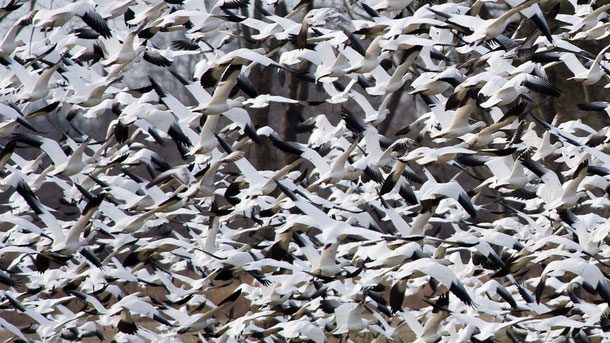Why don’t birds collide when they are flying close together in tight flocks?

The simple answer to this deceptively complex question is that birds in a flock pay close attention to the birds around them—particularly their closest neighbors.
We often marvel at the amazing collective movements of groups of birds, from groups of sandpipers wheeling in a hairpin turn along a beach, to skeins of Snow Geese flying over the prairie. One common example is flocks of European Starlings. They create immense, swirling figures across the sky (often called “murmurations,” though this term technically applies to any group of starlings) that are hard to miss.
Surprising as it may be, flocks of birds are rarely led by a single individual. Even in the case of geese, which appear to have a leader, the movement of the flock is actually governed collectively. But starling flocks in particular display remarkable density of individuals, fluidity of motion, and frequent changes in direction. (Incidentally, these flocks often form because a Peregrine Falcon or other raptor is nearby. Read A Darwinian Dance in Living Bird magazine for more.)
The motion of starling flocks is so fascinating that it has inspired study among computational physicists who try to understand how such coordination can spontaneously arise. One group of researchers determined that when one starling changes direction or speed, each member of the flock responds almost instantaneously, regardless of the size of the flock—a phenomenon they termed “scale-free correlation.” Another group determined that starlings in large flocks consistently coordinate their movements with their seven nearest neighbors.
For more about these studies—and to watch a video of a “murmuration” in action—see our article: How Do Starlings Flocks Create Those Mesmerizing Murmurations?

All About Birds
is a free resource
Available for everyone,
funded by donors like you
American Kestrel by Blair Dudeck / Macaulay Library
